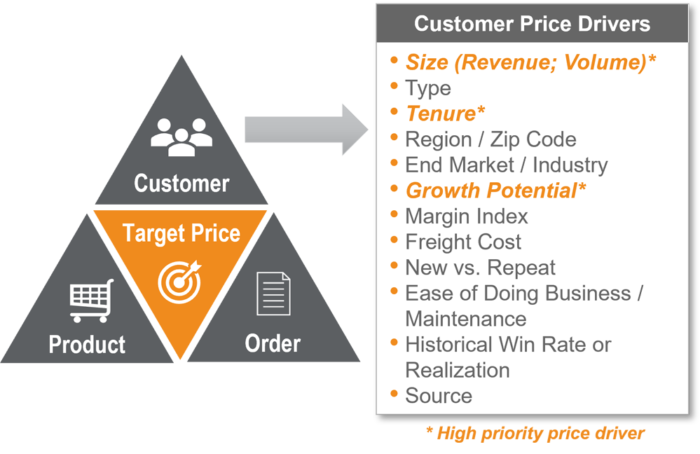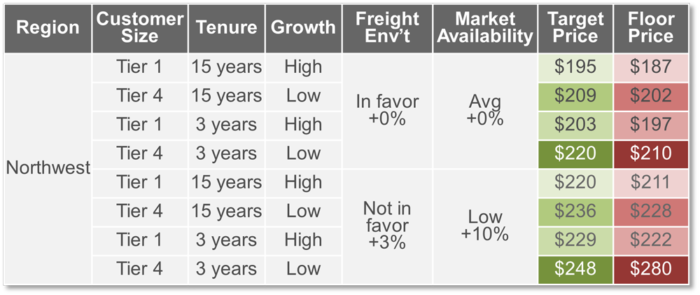Improve Profitability Amidst Supply Chain Disruptions

Whether it’s freight constraints, labor availability, supply shortages, inventory challenges, trade laws, or any other supply chain disruptions, navigating an ever-changing market can put businesses at risk of both losing customers and eroding profitability.
To stay profitable during supply chain disruptions, it’s more important than ever to ensure you understand your customer needs – and the costs to serve that customer, product, or service. One pricing strategy that can help improve profitability is customer segmentation – that is, the evaluation of unique aspects of your customers that place them in peer groups. By doing this, businesses can manage and optimize pricing actions, policies, programs, and other operational standards across similar-behaving customers.
Determine Optimal Customer Segmentation Relevant to Supply Chain Disruptions:
- Are there certain geographical areas that are more complex, expensive, or slower to service?
- Where are your highest-value customers located?
- Do your freight policies put you in an advantage or disadvantage?
- Does the cost to serve your customers vary by channel, market, or customer type?
- Do certain customer rebate or incentive programs have thresholds that are no longer profitable?
- Are smaller customers receiving better programs than larger customers because of the channel they are buying through?
- Are certain end-markets seeing higher demand, greatly impacting your ability to stock and service at the same levels?
- Have you seen a change in profit margin for historically stable customers?
- Have you seen an uptick or decline in new customers due to changing market demand?
- How has this impacted your wallet share? Your ability to quote new business?
- Have you seen changes in lead time affect customer relationships or contracts?
- Are certain customers willing to pay any price just to purchase your product or service?
Each of these items can be tied back to a cost-to-serve element that affects profitability. For example, you may consider adjusting your freight policy for customers with lower margin that need product shipped to harder-to-get-to regions. While that may sound simple, and perhaps obvious, our real-world customers are usually in a more complex scenario. Perhaps existing contracts restrict certain price or program adjustments, or your large, multi-regional customer won’t accept regional-based price policies. It might be that your lowest margin customers are also the largest % of your revenue, or that your warehouse is full of product that those customers don’t care about because unpredictable shipments left you overstocked – leaving no room for the product they do care about. These scenarios illustrate why customer segmentation can help optimize pricing, especially when supply chain disruptions occur.
Identify Your Price Drivers (e.g. Customer Traits Key to Your Business Success):
- High revenue
- Strategic partners
- Long tenure
- Growth potential
- Frequent buyers / high volume
- High margin
- Low price sensitivity or high difficulty to switch suppliers
- Within a stable or growing industry
- etc.
By identifying and prioritizing the ideal customer profile and behavior, you can begin to segment customers based on these price drivers. Ideally, these customer drivers are aligned to business objectives and also work in tandem with your product and order price drivers (or segmentations). Illustrated below are examples of key price drivers for optimal customer segmentation:
Then, as shown in the table below, this customer segmentation provides clearer pricing guidance when determining how to optimize price changes when supply chain disruptions occur.
If you’re getting started with customer segmentation, make sure you have the right data that can be used to generate actionable knowledge. And if you already have your customer segmentation in place, improve your ROI with micro-segmentation of customer, product, and order factors that work together to generate the ideal target price.
When supply chain disruptions hit, there is no one-size-fits-all answer. Knowing who your best customers are and how to take care of them is key to maintaining – and growing – relationships and ultimately improving profitability and driving impact to your bottom line.




